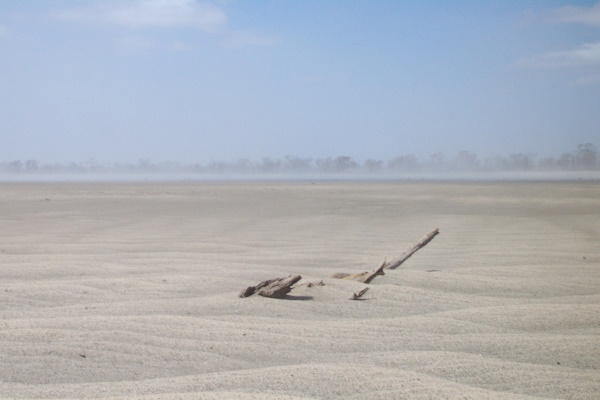Lake Hindmarsh is Victoria’s largest natural freshwater lake and is appreciated as a valuable natural asset for recreation and its natural beauty, but there have been some unusual proposals made over the years to put it to other uses.
Explorer Edward John Eyre was the first European to view the lake in 1838 while searching for a suitable overland route between Port Phillip (Melbourne) and Adelaide, and the local indigenous population had been visiting the area long before this.
When viewing the vast expanse of water for the first time, the new settlers were sceptical of the aboriginal’s claim that it periodically dried up completely, but when observations confirmed this to be true, it presented them with some perceived management problems.
When the lake has held water for extended periods, it has been popular for water sports, including swimming, skiing and sail boating, and at times, it has even supported a commercial fishing industry.
In contrast, it becomes a large dust bowl when dry until natural vegetation encroaches on the dry lakebed.
Regardless of which of these states it is in, its importance to the natural ecology of the district includes being a significant breeding area for many water birds, such as pelicans.
Despite these uses, several unusual and even controversial proposals were put forward in the late 1800s to put the area to other uses.
As the dry periods became more frequent, attributed to the increasing removal of water upstream of the lake for stock, domestic, and irrigation purposes, the farmers working properties adjoining the lake became concerned that the dry lake bed became a breeding ground for rabbits and other vermin, calls were made to allow them to cultivate the land.
There was also a view that the water that flowed into the lake during the wet periods was wasted through evaporation, but if it could be diverted further to Pine Plains, north of Lake Albacutya, it would nourish a much larger area that could then be made available for agriculture.
For this to be practical, several proposals were put forward to divert the Wimmera River around the lake.
By the middle of 1887, plans were seriously being considered to achieve this, with the Wimmera Water Trust seeking permission from the Dimboola Shire to survey potential diversion routes.
The following year, Consulting Surveyor J.D. Derry presented a proposal to bypass both lakes.
His plan began with a dam across the river about half a mile from the lake (the existing weir was not constructed until 1903), with a 1,000-foot-long bye-wash to the west of the dam to take flood waters around the structure into the lake and a regulator to the east at the head of the diversion channel.
The resulting dam would inundate around seven square miles of land, leaving the Hindmarsh homestead (located at what is now the west end of Roy Street in Jeparit) on an island. The township of Jeparit had been surveyed by this time, the homestead was the only significant development in the area.
He considered the estimated cost of £5,000 to compensate the affected landholders for being worth it when balanced against reclaiming 30,000 acres of rich land from both lakes and a yet-to-be-determined area that would benefit from a more reliable water supply north of Lake Albacutya.
A channel of just over 15 miles skirting the east side of the lake would then take the water to the north end of Lake Hindmarsh to the head of Outlet Creek where works would be required to ensure that all of the flow enters the creek.
From here, the water would flow down the natural course of Outlet Creek, where another artificial channel would divert the flow around the east side of Lake Albacutya to its outlet creek, where the water would continue north along the natural watercourse.
Derry estimated the cost of this scheme to be £38,000, plus another £5,000 to compensate the settlers who would be affected by the inundation caused by the dam.
The anticipated benefits had this scheme been implemented, included opening up a large area of new land for farming, increasing the quantity and value of grain produced in the district, and allowing it to support a larger population.
Vermin control on the lakes would also have been improved as it would have become the responsibility of the landholders instead of a government department needing to do it when the lake was dry.
Both points would have been viewed as benefits at the time, but it would be questionable if they would have had significant ongoing advantages that outweighed the loss of these lakes as natural assets.

Lake Hindmarsh was dry in 2002 – would it be a more productive asset if it was permanently dry and used as farming land?
|





